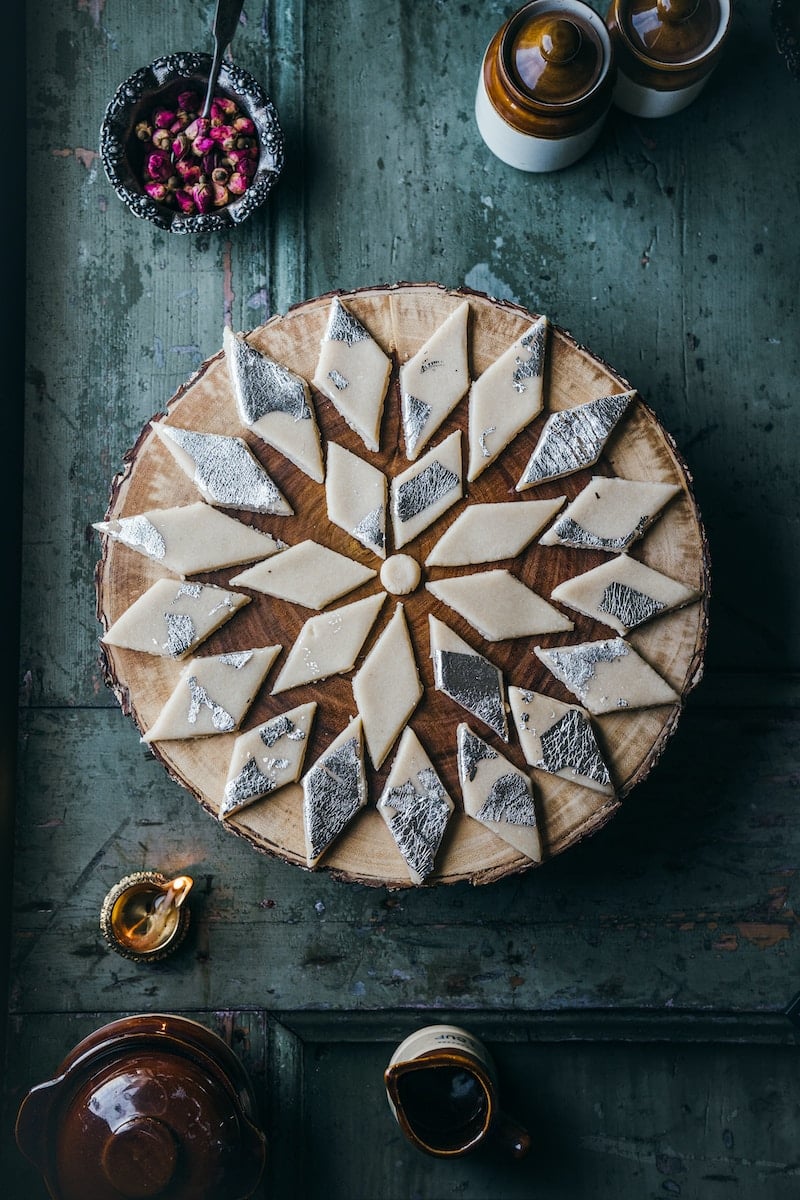The art of making traditional indian sweets

The rich and vibrant culture of India is reflected not only in its music, art, and festivals, but also in its cuisine. Indian sweets, or mithai, are an integral part of Indian cuisine and play a significant role in festival celebrations and feasts. In this article, we will delve into the heart of Indian sweet making, showcasing popular recipes and the key ingredients like milk, sugar, flour, cardamom, ghee, and saffron that go into creating these mouthwatering delicacies.
The Sweet Tradition of Indian Sweets
Indian sweets are not just about satisfying a sweet tooth. They bear a significant cultural value in the Indian society. These desserts are offered to deities during worship, shared among family and friends during festivals, and served as a mark of celebration and joy.
A lire également : The art of cooking with aromatic herbs
Primarily made from milk, flour and sugar, the variety of Indian sweets is staggering, with each region of India boasting its own unique recipes. Ghee, or clarified butter, is another key component in many sweets, giving them a rich and aromatic flavor.
Key Ingredients in Indian Sweets
To embark on the culinary journey of Indian sweet making, it’s important to know about the essential ingredients that you will frequently use.
A découvrir également : Slow cooker success: set it and forget it recipes
Milk
An integral ingredient in Indian sweets, milk is often used in its condensed form or as ‘khoya’ – a thick, dried whole milk used in making a variety of sweets like ‘Gulab Jamun’, ‘Peda’, and ‘Burfi’.
Sugar
Sugar forms the base of the syrup in which many sweets are dipped or cooked. This syrup, often laced with flavours like cardamom, saffron or rosewater, gives the sweets their distinct taste.
Flour
Flour, specifically wheat or chickpea, is the key ingredient in sweets like ‘Jalebi’, ‘Laddu’, and ‘Malpua’. It’s often combined with ghee and sugar to attain the desired consistency and sweetness.
Cardamom
Cardamom seeds add a unique aroma and flavor to Indian sweets. It’s commonly used in sweets like ‘Kheer’, ‘Rasgulla’, and ‘Halwa’.
Ghee
Clarified butter or ghee is used extensively in Indian sweet dishes for its rich flavor. It’s used in frying, greasing, and even as a main ingredient in sweets like ‘Mysore Pak’.
Saffron
Saffron is a luxurious ingredient often used in Indian sweets for its rich aroma and a distinctive yellow hue. It’s commonly used in ‘Kesar Peda’, ‘Shrikhand’ and ‘Rasmalai’.
The Art of Creating Sugar Syrup
Creating the perfect sugar syrup is an art that requires precision and patience. It’s not just about mixing sugar and water. The consistency of the syrup, whether it’s a single-thread or a two-thread consistency, will determine the texture and sweetness of the final product.
To make a basic sugar syrup, add 1 cup of water to 1 cup of sugar and simmer it on low heat. Keep stirring until the sugar dissolves completely. To check the consistency, take a small amount of syrup between your thumb and index finger. When you pull the fingers apart, a single thread should form without breaking.
Popular Indian Sweets and Their Recipes
Let’s explore a couple of popular Indian sweet recipes that you can try at home.
Gulab Jamun
Gulab Jamun is a popular Indian sweet made of khoya balls deep-fried and soaked in sugar syrup. The recipe requires khoya, all-purpose flour, baking soda, ghee for frying, and sugar syrup flavored with cardamom and rose water.
Mix the khoya with flour and baking soda to make a smooth dough. Shape them into balls and deep fry in ghee until golden. Soak these fried balls in warm sugar syrup for at least two hours before serving.
Jalebi
Jalebi is a crispy, spiral-shaped sweet made from fermented batter fried in ghee and soaked in sugar syrup. The recipe requires maida (refined flour), curd, ghee, sugar, saffron, and cardamom.
Mix maida and curd to make a thick batter and let it ferment for 24 hours. Pour this batter into a squeeze bottle or piping bag and create spirals in the hot ghee. Fry until golden and then immerse in saffron-infused sugar syrup. Once the jalebis have soaked up the syrup, they’re ready to serve.
Indian sweets are an integral part of the country’s culinary heritage. Each sweet dish tells a story, carrying the flavors and traditions of the region it belongs to. They’re made with love and shared with joy, bringing people together in celebration. So go ahead, try these recipes and experience the joy of making traditional Indian sweets.
Crafting Traditional Indian Sweets: Soan Papdi and Gulab Jamun
Many traditional Indian sweets like Soan Papdi and Gulab Jamun have recipes that have been passed down through generations. These delicacies require patience, finesse, and a deep understanding of ingredients.
Soan Papdi, a flaky Indian dessert that melts in your mouth, is a festival favorite. To prepare it, you need gram flour, all-purpose flour, ghee, sugar, and water. A sprinkling of powdered sugar and crushed dry fruits like pistachios and almonds can be added for garnish. In a heated pan, add ghee, followed by the flours and mix well until the mixture gains a light brown color. Simultaneously prepare a sugar syrup, and then carefully blend the syrup with the cooked flour mixture. After cooling, the mix is shaped into thin, flaky pieces.
Gulab Jamun, another iconic Indian dessert, has already been detailed in the previous sections. Still, it’s worth mentioning that adding a hint of lemon juice to the sugar syrup can prevent it from crystallizing, ensuring your Gulab Jamuns stay soft and syrupy.
The Role of Rare Ingredients: Lotus Seeds and Rose Petals
Indian sweets often incorporate unique ingredients like lotus seeds and rose petals that add unique flavors and aesthetic appeal. Lotus seeds, known as makhana in Hindi, are low in cholesterol, saturated fat, and sodium. They are used in sweets like ‘Makhana Kheer’, a type of pudding, and ‘Phool Makhana Laddu’, a variety of sweet balls.
To make Makhana Kheer, roast the lotus seeds in ghee until they become crispy. Then, add milk and sugar and let it simmer until the milk reduces to half. Finally, garnish with dry fruits and serve hot or chilled.
Rose petals, on the other hand, are used to create ‘Gulkand’, a sweet preserve. The petals are layered with sugar and left to dry in the sun for a few weeks. This preserve is used in ‘Paan’, a mouth-freshener, and ‘Gulkand Barfi’, a type of fudge.
Conclusion
Making traditional Indian sweets is indeed an art. Every bit of stirring, the addition of ingredients at the right time, the consistent monitoring of the cooking process, and the secret pinch of love that goes into these sweets make them special. Whether it’s the crispiness of Jalebi, the softness of Gulab Jamun, or the flaky delight of Soan Papdi, each Indian sweet has its own charm and significance.
As you embark on this sweet journey, it’s essential to remember that patience is key. If you’re using an instant pot to quicken the process, ensure that the settings align well with the traditional cooking times. Finally, no Indian sweet is complete without a sprinkle of cardamom powder or a garnish of dry fruits. So don your apron, start mixing, and dive into the delightful world of traditional Indian sweets!
